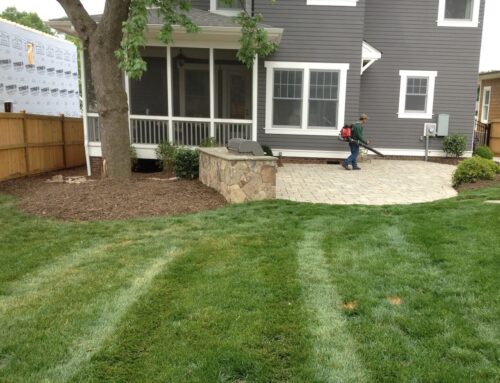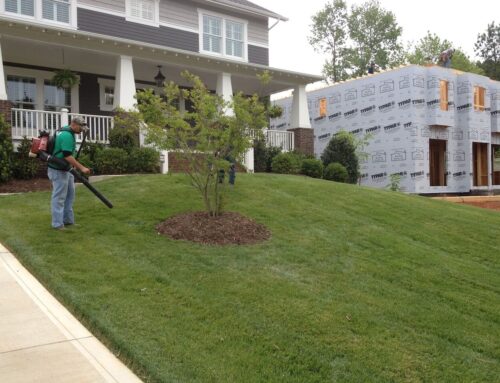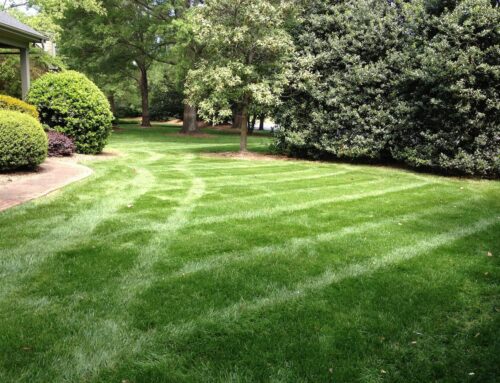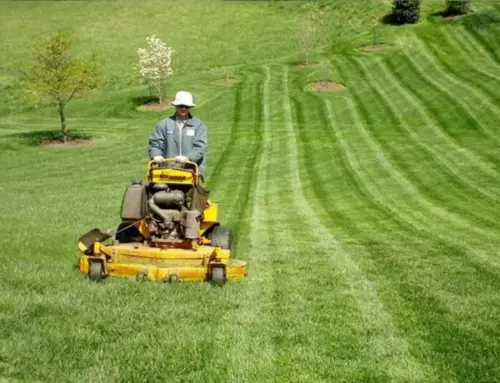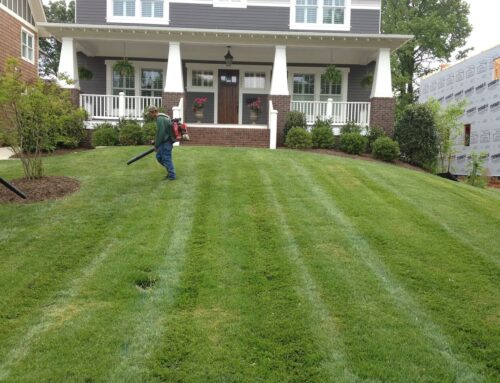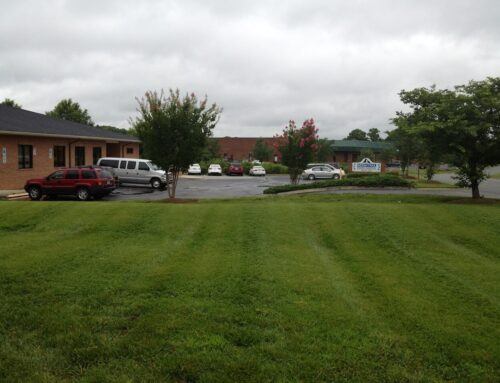Lawn mowing might seem like a simple task, but it has a surprisingly significant impact on local ecosystems. The way we manage our lawns affects soil health, insect populations, and even local water quality. From the frequency of mowing to the type of equipment used, small choices can either support or disrupt the delicate balance of local habitats.
Whether you’re maintaining a small yard or a larger property, understanding these impacts can help you make eco-friendly choices that benefit both your lawn and the surrounding ecosystem. Let’s dive into the environmental perspective of lawn mowing and discover simple ways to make a positive difference.
How does regular lawn mowing impact biodiversity in local ecosystems?
Regular lawn mowing significantly impacts biodiversity in local ecosystems, influencing plant life, wildlife habitats, and overall ecological health. Here are several ways that mowing affects biodiversity:
- Reduction of Plant Diversity: Frequent mowing often favors certain grass species while inhibiting the growth of wildflowers and other native plants. This reduction in plant diversity can lead to monocultures, which do not support a wide range of wildlife.
- Habitat Disruption: Mowing can disrupt habitats for small mammals, birds, and insects. Many ground-nesting species rely on tall grass for cover; regular mowing can destroy their nests and reduce their populations.
- Impact on Pollinators: A diverse array of flowering plants is crucial for pollinators like bees and butterflies. Regular mowing removes these vital food sources, leading to declines in pollinator populations and, consequently, the plants that depend on them for reproduction.
- Soil Health: Mowing can compact the soil, disrupting the delicate balance of microorganisms and reducing nutrient availability. Healthy soil supports a diverse range of plant life and various animal species.
- Increased Chemical Use: To maintain manicured lawns, homeowners often resort to pesticides and fertilizers, harming beneficial insects and pollinators and leading to runoff that negatively affects local water bodies.
Regular lawn mowing can significantly diminish biodiversity by reducing plant variety, disrupting habitats, harming pollinators, affecting soil health, and increasing chemical usage.
What role does lawn mowing play in soil health and ecosystem stability?
Lawn mowing plays a crucial role in soil health and ecosystem stability by influencing various factors that affect plant growth, soil structure, and overall ecological balance. Here are several key aspects of how lawn mowing impacts these elements:
Promotes Grass Health: Regular mowing encourages dense grass growth by stimulating lateral branching. Healthy grass contributes to soil stability, preventing erosion and promoting the development of a robust root system that enhances soil health.
- Control of Weeds: Mowing helps manage weeds by preventing them from flowering and seeding. This control reduces resource competition and maintains a more balanced ecosystem, allowing desirable plants to thrive.
- Organic Matter Contribution: Grass clippings left on the lawn after mowing decompose and return nutrients to the soil, enhancing its organic matter content. This process improves soil structure, water retention, and nutrient availability.
- Soil Aeration: Mowing can help aerate the soil, especially when using mulching mowers. Aeration promotes better root growth and improves air and water movement within the soil, benefiting overall soil health.
- Pest Management: Regular mowing can disrupt pest life cycles by reducing habitat for insects and other pests that thrive in overgrown areas, contributing to a healthier lawn ecosystem.
Lawn mowing is vital in promoting soil health and ecosystem stability by supporting grass growth, controlling weeds, contributing organic matter, aerating the soil, and managing pests.
How does lawn mowing frequency affect local wildlife habitats?
The frequency of lawn mowing significantly affects local wildlife habitats by altering the availability of food, shelter, and nesting areas for various species. Here are several ways in which mowing frequency impacts wildlife:
- Disruption of Nesting Sites: Frequent mowing can destroy the nests of ground-nesting birds and small mammals. Many species rely on tall grasses and dense vegetation for protection during the breeding season, and regular cutting can reduce populations.
- Loss of Food Sources: Mowing can eliminate flowering plants and grasses that provide essential food sources for herbivorous wildlife and pollinators. This reduction in biodiversity can lead to declines in populations of insects, birds, and small mammals that depend on these plants.
- Habitat Fragmentation: Regularly maintained lawns can create fragmented habitats, isolating wildlife populations and making it difficult for species to move and reproduce. This isolation can lead to decreased genetic diversity and increased vulnerability.
- Increased Vulnerability to Predation: Mowed lawns offer less cover for wildlife, making animals more exposed to predators. Reduced shelter can result in increased mortality rates, particularly for young animals.
- Alteration of Microclimates: Frequent mowing alters microclimates within habitats, affecting temperature and humidity levels. This can impact the survival of various plant and animal species that thrive in specific conditions.
Lawn mowing frequency can profoundly affect local wildlife habitats by disrupting nesting sites, reducing food sources, fragmenting habitats, increasing vulnerability to predation, and altering microclimates.
What environmental effects can result from using lawn mowing equipment on ecosystems?
Using lawn mowing equipment can have several environmental effects on ecosystems, influencing air quality, soil health, and local wildlife. Here are some key impacts:
- Air Pollution: Gas-powered lawnmowers emit carbon monoxide, nitrogen oxides, and volatile organic compounds. These emissions contribute to air quality degradation and can pose health risks to humans and wildlife.
- Noise Pollution: Lawn mowing equipment generates significant noise, disturbing local wildlife, particularly birds and mammals. Loud sounds can disrupt communication, mating behaviors, and feeding patterns, potentially leading to habitat displacement.
- Soil Compaction: Heavy lawn mowing equipment can compact soil, reducing its porosity and ability to retain water. This compaction can hinder root growth and negatively affect soil microorganisms essential for nutrient cycling.
- Chemical Runoff: Many homeowners use pesticides and fertilizers for lawn maintenance. Mowing can disturb treated areas, increasing the risk of chemical runoff into nearby waterways, harming aquatic ecosystems, and leading to algal blooms.
- Disruption of Wildlife Habitats: Frequent mowing can lead to habitat loss and fragmentation, reducing local wildlife’s available shelter and food sources. This disruption can lead to declines in biodiversity and alter ecosystem dynamics.
Using lawn mowing equipment can have significant environmental effects, including air and noise pollution, soil compaction, chemical runoff, and disruption of wildlife habitats, highlighting the need for more sustainable lawn care practices.
Protect Local Ecosystems: Choose Eco-Friendly Lawn Care!
At Performance Lawn & Landscape, we believe in protecting local ecosystems while maintaining beautiful lawns. Our eco-friendly lawn care practices prioritize sustainability, using organic fertilizers and natural pest control methods that minimize environmental harm. We focus on practices that promote soil health, enhance biodiversity, and reduce chemical runoff. Contact us today to learn more about our sustainable lawn care solutions!


